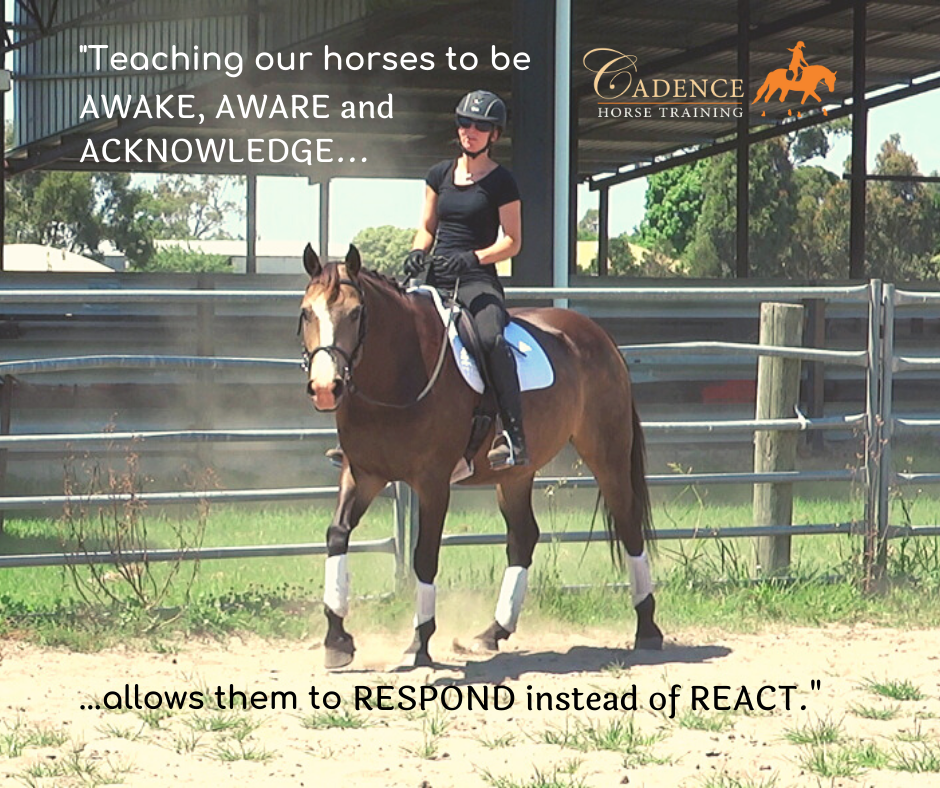|
One objective during the training of horses is to creating an obedient horse who follows direction and is tolerant to many levels of pressure and/or changing environments. The methods by which we achieve this may affect the longevity or reliability of responses. By flooding the horse with scarier objects and larger amounts of pressure, we create submission or learned helplessness. This state of mind means the horse checks out to block out the aversive stimulus. They learn that flight or fight is futile, so cease to exhibit a reaction. This submissive behaviour may last for months or even years and may extend to many different experiences or situations, however, since the horse exhibits limited outward expression, signs or signals during their interactions or work, it is not possible to gauge when or where this tolerance level will be over exerted. What IS possible is that you may be made very aware of when this threshold has been reached! Instead of flooding the horse, shutting them down or switching them off from their surroundings and environment, we can teach coping mechanisms and conditioned responses which influence their physiological reactions and in turn, their behaviour and responses to stimuli. By training in this way, we create more versatile responses that extend to a wider scale of pressure levels and a broader set of non-specific stimuli, making a more reliable, safer and happier team-mate.
Pressure comes in many forms, ranging all the way from a clover leaf to a chain saw wielding maniac! Your horse’s temperament, personality and past experiences will determine their tolerance level and there may also be specific triggers. Some signs your horse may be checked out: 🐴 Immobile ears, often positioned backwards 🐴 Lack of blinking or half blinks 🐴‘Statue’ syndrome, even when the feet are still the horse can show awareness by mobility in the head, neck, ears and facial expressions 🐴 Going to sleep, this is often mistaken as a sign of relaxation but may indicate introverted stress or anxiety How do we keep our horses checked in? 🐴Teaching coping mechanisms and conditioned responses through redirecting focus, balance, body control and postural training 🐴Teaching our horses to seek direction when unsure 🐴Being tactile and allowing our horses to be tactile 🐴Acknowledging our horse when they are unsure and then providing direction 🐴Allowing expression within safe boundaries ”By teaching our horses to be AWAKE, AWARE and ACKNOWLEDGE, we allow them to RESPOND as opposed to REACT.” - Cadence Horse Training |
CADENCE HORSE TRAININGStriving to maintain an encouraging and inclusive culture among fellow equestrians. We're passionate about all things equine including behaviour, biomechanics, training and horsemanship! Archives
December 2021
Categories |

 RSS Feed
RSS Feed